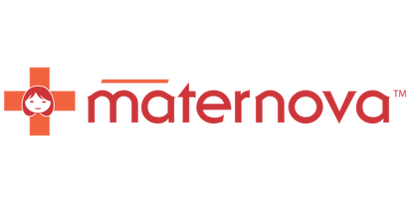Add description, images, menus and links to your mega menu
A column with no settings can be used as a spacer
Link to your collections, sales and even external links
Add up to five columns
Add description, images, menus and links to your mega menu
A column with no settings can be used as a spacer
Link to your collections, sales and even external links
Add up to five columns
We Need a Sickle Cell Solution for Expectant Moms
October 28, 2016 2 min read
One topic in the conversation that resonated deeply with us, was also one that until that moment, we hadn’t given much thought to. We’ll be interested in your thoughts on this topic, so email us anytime.
One of the most overlooked diseases that can gravely impact pregnancy is Sickle Cell Anemia. This devastating abnormality which drastically reduces both RBC and blood oxygen, isn’t a typical antenatal screening point. Surprisingly enough, popular opinion believes the SCD exists largely only in Africa. But that isn’t the entire truth. While the majority of those battling this crippling disease, the Latin population is also predisposed to its grip. Here in the USA, it’s guessed that up to 100,000 people are actively living with the disease. Some of them are women who are pregnant, or may have just given birth.
It was with utter shock horror that I listened to our advisor friend explain to us that the normal treatment protocol for sickle cell ‘flare ups’ (which are excruciating ) has been Hydroxyurea, a prescription medicine designed to increase oxygen/hemoglobin levels and reduce pain. There is only one small caveat. Hydroxyurea is not intended for use during pregnancy, as it can cause multiple problems for the fetus, including serious birth defects.
During pregnancy, a woman’s RBC level rises 400-500 mL to support the 40-50% increase in blood volume. For a woman with sickle cell disease, it is close to impossible to meet those necessary levels in order to avoid both a flare up, along with causing many ante-natal complications like pre-eclampsia, eclampsia, and stroke just to name a few.
The current solution for helping expectant mothers who also happen to have sickle cell disease is sadly opioid based. Pregnant women are given Oxycontin to manage their pain. While Oxycontin/Oxycodone are labeled as a ‘category B’ drug, making it safe for use during pregnancy, there may be larger issues at hand. Addiction born from a woman’s use during pregnancy, is a serious and dire crisis in our healthcare system. This blogger will hazard a guess that those prescribing the opioids are not screening for history of addiction in the family, along with a full prenatal depression/mental illness and emotional health screening. Women are being turned into addicts out of sheer laziness in not developing a non-narcotic pain management system. We are working at Maternova to change that.
photo credit: UN Photo, Timor l'este
Leave a comment
Comments will be approved before showing up.
Also in The Maternova Blog
Pumani bubble CPAP
November 11, 2025 1 min read
The Pumani bubble CPAP was engineered by a team at Rice University in Texas, working in collaboration with clinicians in Malawi. A range of specific design considerations made the Pumani especially appropriate for low-resource settings so that parts are easy to replace.
The MaternaWell Tray for PPH estimation now appears in key obstetric guidelines
October 30, 2025 1 min read
A 'tray' is now mentioned in the FIGO/WHO/ICM Consolidated Postpartum Hemorrhage Guidelines published by in 2025, expanding the type of monitoring device from drape to drape or tray.
Is it ethical to separate mother and infant just after birth?
October 28, 2025 2 min read
Immediate skin to skin care means less than ten minutes after the infant takes its first breath, the infant, naked except for a diaper, spends at least one hour on the mother’s chest, against her skin. It is recommended that preterm and low birth weight kangaroo care involve prolonging contact beyond the first hour for at least 8 hours per day or as long as possible (up to 24 hours) per day

